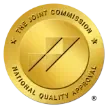Learning that you have sleep apnea can be both a relief and frustration. Relief because you finally have answers to why you’re so tired during the day, wake up with headaches, and have a short fuse (among other symptoms!). Frustration because it’s just another thing you have to deal with. Sometimes it feels like the punches just keep coming.
We understand, but sleep apnea isn’t a curse, and it doesn’t have to be complicated or difficult to treat. There are treatment options that can help you get the sleep you need without disrupting your life. If you’re reading this post, you’ve likely already taken your home sleep test or will shortly. Your sleep test from SleepTest.com comes with a post-telemedicine visit in which a sleep physician will explain your results and let you know if you have sleep apnea, what kind, and its severity. But we understand that it’s only natural to want to have an understanding of how to read the results of your sleep test. Being well-informed will help you understand the severity of your condition and why you’re recommended certain treatment options over others.
In the following sections, we'll discuss the main components of your sleep test and provide an overview of understanding the results.

Apnea/Hypopnea Index (AHI)
Your AHI is the most important number on your sleep study results. It’ll tell you the severity of your sleep apnea.
< 5 = normal AHI score in an adult. If you have an AHI score of 4 or lower, you don’t have sleep apnea.
5-15 = mild sleep apnea.
15-30 = moderate sleep apnea.
> 30 = severe sleep apnea.
Let’s dive a little deeper into the AHI and how a sleep study will determine your score.
The “A” in AHI stands for apnea. An apnea episode is when you stop breathing for at least 10 seconds while you are asleep.
The “H” in AHI stands for hypopnea. A hypopnea episode is when you experience 50% less ventilation which results in a 4% or more reduction of oxygen in your arteries. Basically, you have a partial obstruction in your airway, which doesn’t allow you to get all the oxygen you need, but it’s not a full obstruction that causes a true apnea episode. Your sleeping partner probably hears this partial obstruction—snoring!
So your AHI score is a combination of how many apneas and hypopneas you experienced during the night divided by the number of hours you slept. So let’s say that you stopped breathing 20 times during the night, had a partial obstruction 40 times, and slept for eight hours. Your AHI score would equal (20+40)/8, which is 7.5, putting your AHI in the mild sleep apnea category.
How does the sleep study determine my breathing and blood oxygen level?
Your home sleep study is equipped with many sensors that collect and store data in the ApneaLink Air device. Home sleep studies from SleepTest.com have a nasal cannula—a tube that fits just into the beginning of your nostrils. When you breathe, the tube carries your breath to the ApneaLink Air device, which records your data.
Your sleep test also has an effort sensor and chest belt that help to collect data on how hard it is for you to breathe (was there an obstruction causing hypopnea?)
To determine your blood oxygen level, your sleep test has an oximeter tubing and an oximeter sensor.
These sensors collect data on your breathing and oxygen to determine if you had any apneas or hypopneas.
O2 Saturation
We have talked a little bit about oxygen saturation. You’ll likely see this reflected in your sleep study as well. Without enough oxygen saturation, you could start to experience shortness of breath, headaches, confusion, restlessness, and even death. Your O2 saturation should be above 95% most of the time. If you were in the hospital, alarms would go off if your O2 was below 90%.
Heart Rate
Your sleep test will also show your heart rate throughout the night. Normal adults usually have a resting heart rate between 60 and 100 beats per minute. A lower or higher heart rate indicates a lack of oxygen.
These are the three main components of a home sleep study. Understanding these will help you to understand your diagnosis and treatment options.
Are You Looking For A Home Sleep Apnea Study?
If you haven’t ordered your home sleep study yet, order yours online from SleepTest.com. We can help you discover your diagnosis and get the treatment you need.

Feeling tired all the time, even after a full night’s sleep? You might be suffering from sleep apnea. Discover how an at-home sleep test can help diagnose the root cause of your fatigue—and get you back to feeling like yourself.

Spring is here—and so is the pollen. For the millions dealing with seasonal allergies, the symptoms can be more than just annoying. And if you also have sleep apnea, those stuffy nights and restless sleep can get even worse.
Let’s take a closer look at how spring allergies and sleep apnea affect each other—and what steps you can take to sleep more comfortably.




